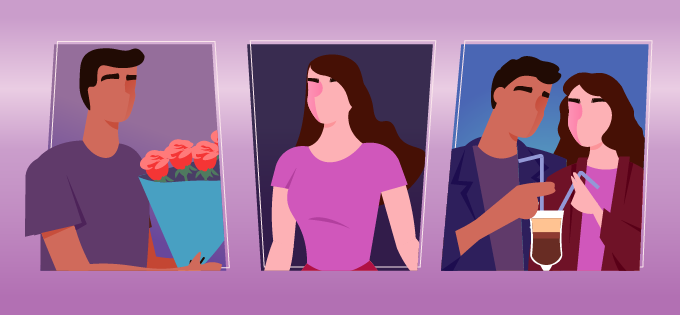

What makes a case study truly compelling

Written by Simon Kearney | Graphics by Yusak Prahadi
The B2B case study is simultaneously the single most useful piece of content to win a sale and the most boring piece of corporate speak you’re likely to consume.
By the time your customers have begun to read your case study, they’re usually on the cusp of buying. You’ve lured them with your ads, blogs and social media mastery. They’ve watched the YouTube video. Finally, they’re trying to make sure they don’t get fired for recommending something that doesn’t work.
But B2B case studies needn’t be boring. There are two secrets to making a highly readable case study. The first lies in adopting a narrative structure—aka, a story arc. I tend to think of them as corporate love stories, hopefully not tragedies, but I’ll get to that later in the second secret.
Problem-Solution-Outcome

The classic case study story arc is called Problem, Solution and Outcome. Think of it as a three-part love story.
It opens with a spark before two people get to know each other. They’re defining a problem statement, wherein our couple realise this romance might be mutually beneficial. Then you have your solution implementation, which is basically the courtship phase. Finally, there’s the outcome, where you decide if it’s forever or just a one-time thing.
Either way, you’ve got a centuries-old tale re-expressed with a buyer and a seller as the main characters, hopefully resulting in a happy ending.
To spell out the structure in more detail:
- Introduction: Set the stage with background information, including what led to the case study.
- Problem: Clearly identify the problem that needs solving.
- Solution: Discuss the steps taken to solve the problem, including the decision-making process and the chosen methods or strategies.
- Outcome: Discuss the results, including data to prove the solution’s effectiveness, if available.
- Conclusion: Summarise the lessons learned and possible future implications.
We helped Google Singapore create a case study video following this structure. Seeking to transition their traditional fish market to the online world and reach a broader audience (Problem), Hai Sia Seafood harnessed Google’s resources. They revamped their website, making it mobile-friendly, and created a video with 200,000 views (Solution), resulting in a fivefold increase in website traffic and substantial growth in online sales, including their popular fishery tour (Outcome).
Challenge-Action-Result

This is really another name for the problem, solution and outcome structure. Challenge, action result is more of a star-crossed lovers approach. The Romeo & Juliet of case studies. It follows the same model but encourages the writer to adopt a more active voice.
- Introduction: Briefly describe the subject and context.
- Challenge: Discuss the hurdles or challenges faced.
- Action: Describe the actions taken to address the challenges.
- Result: Outline the outcomes, and how they met or failed to meet objectives.
- Lessons Learned: Reflect on what the experience taught you and what could be useful for others facing similar challenges.
Using this structure we helped Workday create a case study highlighting the digital transformation of Razer, a gaming hardware company with over 1,000 employees. They were challenged to have a unified single source of truth due to information scattered everywhere, given the disparate business and HR processes (Challenge). By implementing Workday, they have a unified platform that allows them to streamline processes and speed up the decision-making process (Action and Result).
The video was also repurposed as a short blog.
Hero’s Journey

This is a Hollywood blockbuster as a case study. Think romantic comedy, epic drama, even the space opera of case studies. Some say that the Hero’s Journey is the fundamental story template and it has populated humanity’s myths for aeons, which makes case studies a natural successor to receive the same treatment.
This is my favourite approach:
- Ordinary World: Describe the “normal” environment before any changes.
- Call to Adventure: Explain the challenge or problem that disrupts the “normal”.
- Crossing the Threshold: Discuss the decision-making process and action steps.
- Trials and Triumphs: Narrate the experiences, both good and bad, in tackling the problem.
- Resolution: Describe the final outcome, and how things are better (or worse) compared to the starting point.
- Return with Elixir: Discuss the knowledge gained or benefits accrued, which may help in future scenarios.
You start as complete strangers, the “Ordinary World”. Then comes the “Call to Adventure”—the first moment you realise you’re into each other. You then “Cross the Threshold,” by diving into dating, and face your “Trials and Triumphs,” which could range from meeting the parents to figuring out how to share a bathroom. At last, you arrive at the “Resolution,” followed by your “Return with the Elixir” — which is basically your partner knowing exactly how you like your coffee.
HubSpot regularly uses this structure. In this video, they showed how ResellerRatings, an online platform where customers can share their reviews and experiences with various businesses and e-commerce websites, switched to HubSpot after a decade of using their previous CRM system (Ordinary World). Such a change was due to the lack of revenue reporting and frustrations with the lack of features (Call to Adventure).
After transitioning, ResellerRatings achieved a 60% increase in new customer growth quarter-over-quarter, a 76% decrease in customer churn rate, a 30% increase in contract value, and 50 hours saved by the sales team every month. (Resolution and Return to Elixir)
The video is also accompanied by a blog.
Before-After-Bridge

If Wes Anderson made case studies, this would be his method. Or Ken Burns for that matter. In love terms, it’s a biographical dissection of how two people became a couple in amazing detail, leaving no stone unturned.
This is Modern Love for corporations. Before, after and bridge is particularly effective for video case studies where you have effective visuals to show off for the after to tease people to stay for the bridge just so they get more of the beautiful shots.
Like every home renovation show, just be careful not to give everything away too early. And make sure, as a tribute to Wes all your colours are pastel and all your shots are beautifully, symmetrically framed.
- Before: Describe the initial state, including problems or challenges.
- After: Describe the desired state or the actual outcome.
- Bridge: Explain how you moved from the “Before” state to the “After” state, serving as a guide or model for others.
This YouTube Shorts video follows this style. The plastic surgeon shows the before picture of a 69-year-old patient and explains what he did to correct the previous surgery, then shows the process and after picture.
The second secret
Learn how to embrace the bad. If everything is perfect you don’t have a story. And to make a readable case study you need a story, because stories help people remember. Particularly complex or technical information. Chip and Dan Heath wrote in their seminal book Made to Stick that stories are flight simulators for the brain. Turning your case study into a memorable piece of content means honestly analysing the problem, challenge, call to adventure, or before to reveal what wasn’t working in order to get the reader to stick with you to find what did work.
Regardless of which structure you choose, corporate case studies and love stories are not worlds apart. In fact, they’re so similar that if you squint a little, you might just see Cupid drawing back his bow in the boardroom. These stories—whether of love or business—are journeys. They’re filled with highs and lows, challenges and solutions, and above all, they’re lessons we carry forward. So here’s to finding your perfect story arc, in love and in your career.
It’s all about storytelling, the one true language of love and business. Just don’t try to explain that to accounting.
Read more from Click2View:
- Writing with Generative AI: Remixing words like beats
- The Impact of AI and The Future of Marketing
- How do you achieve perfect readability? It’s not as hard as you think…
- AI Content Creation: The July 2023 Update
Sign up to our newsletter for a weekly update on the latest content marketing news. Don’t forget to subscribe to our YouTube channel too!
Click2View is Southeast Asia’s premiere full-service independent B2B content marketing agency servicing clients like Microsoft, Google, Visa, Prudential, and the Lee Kuan Yew School of Public Policy.








